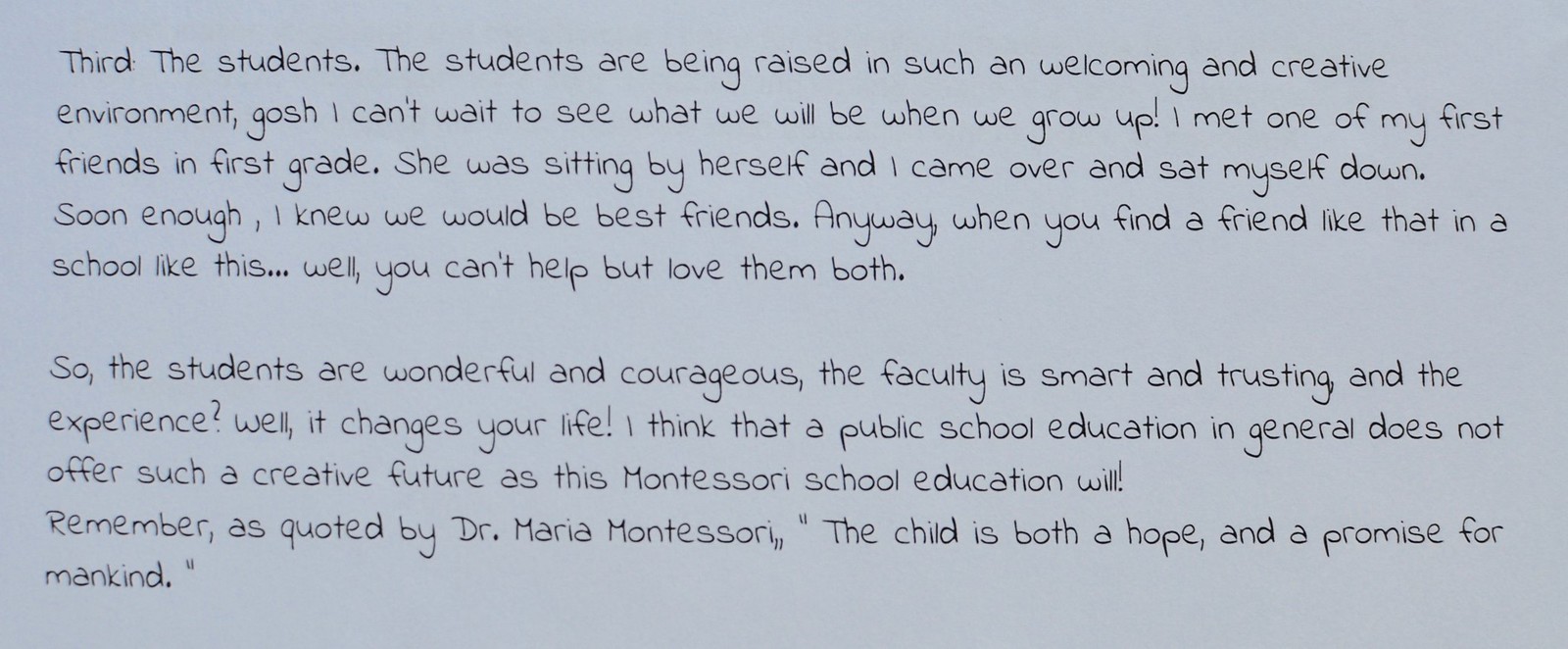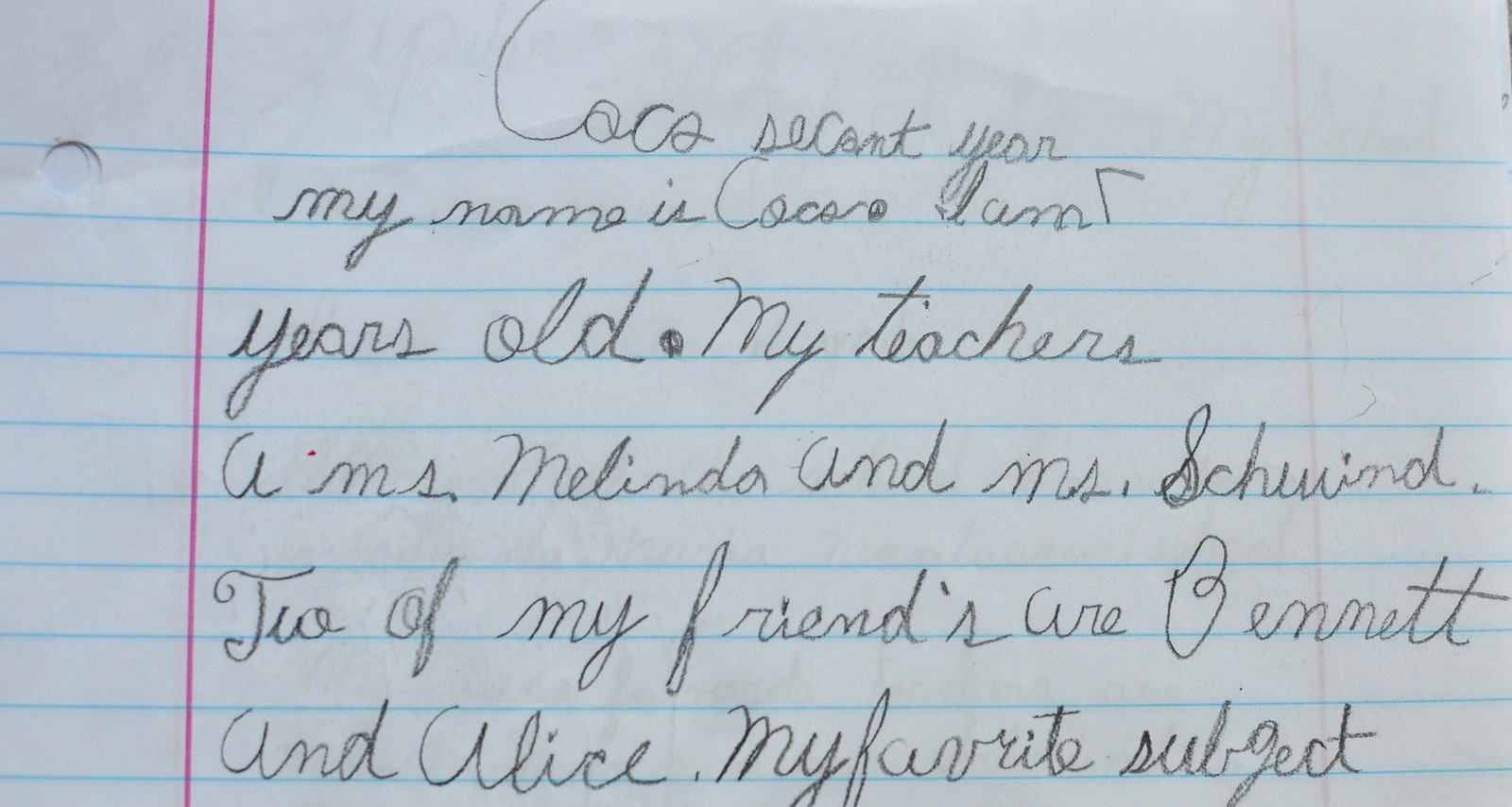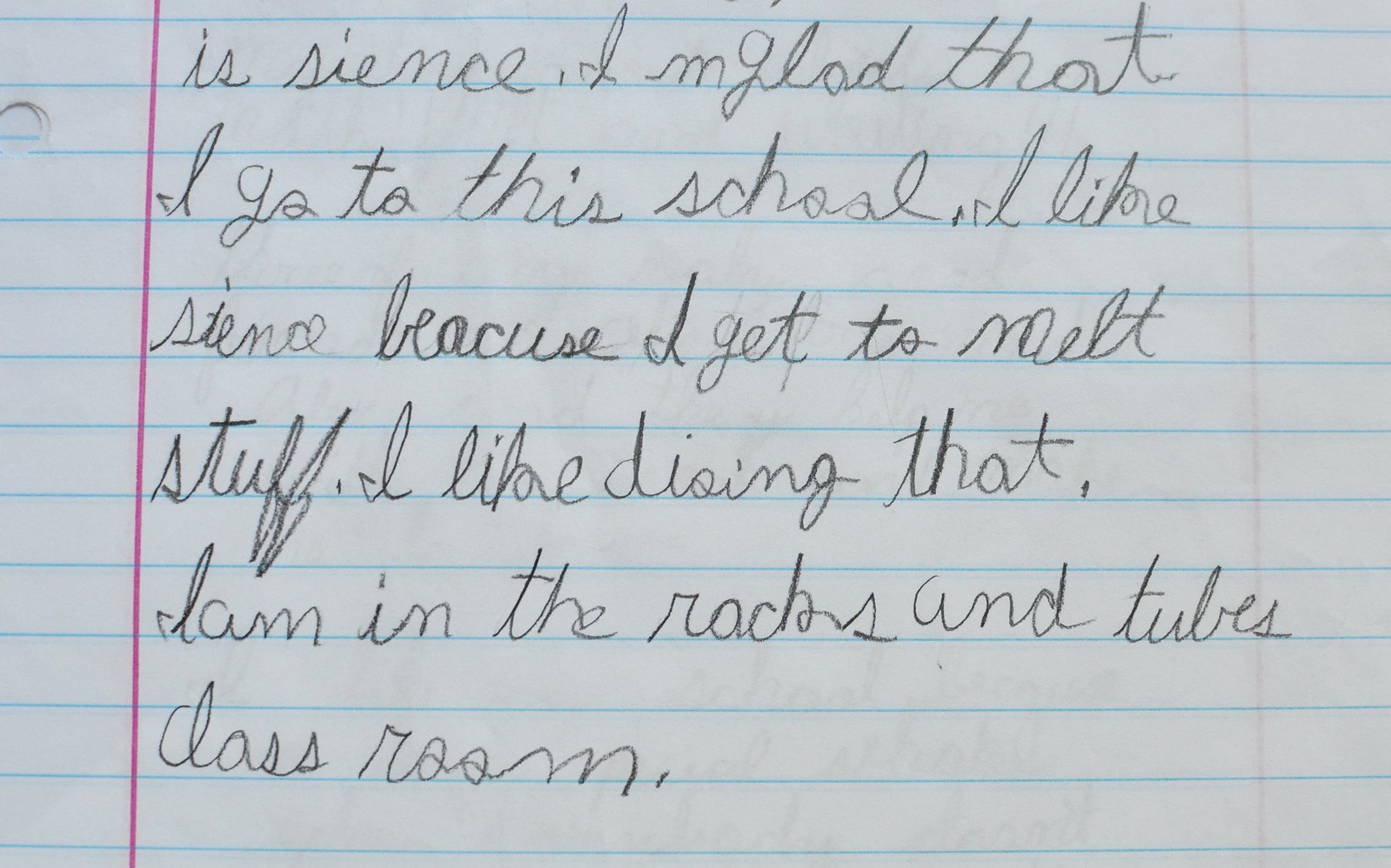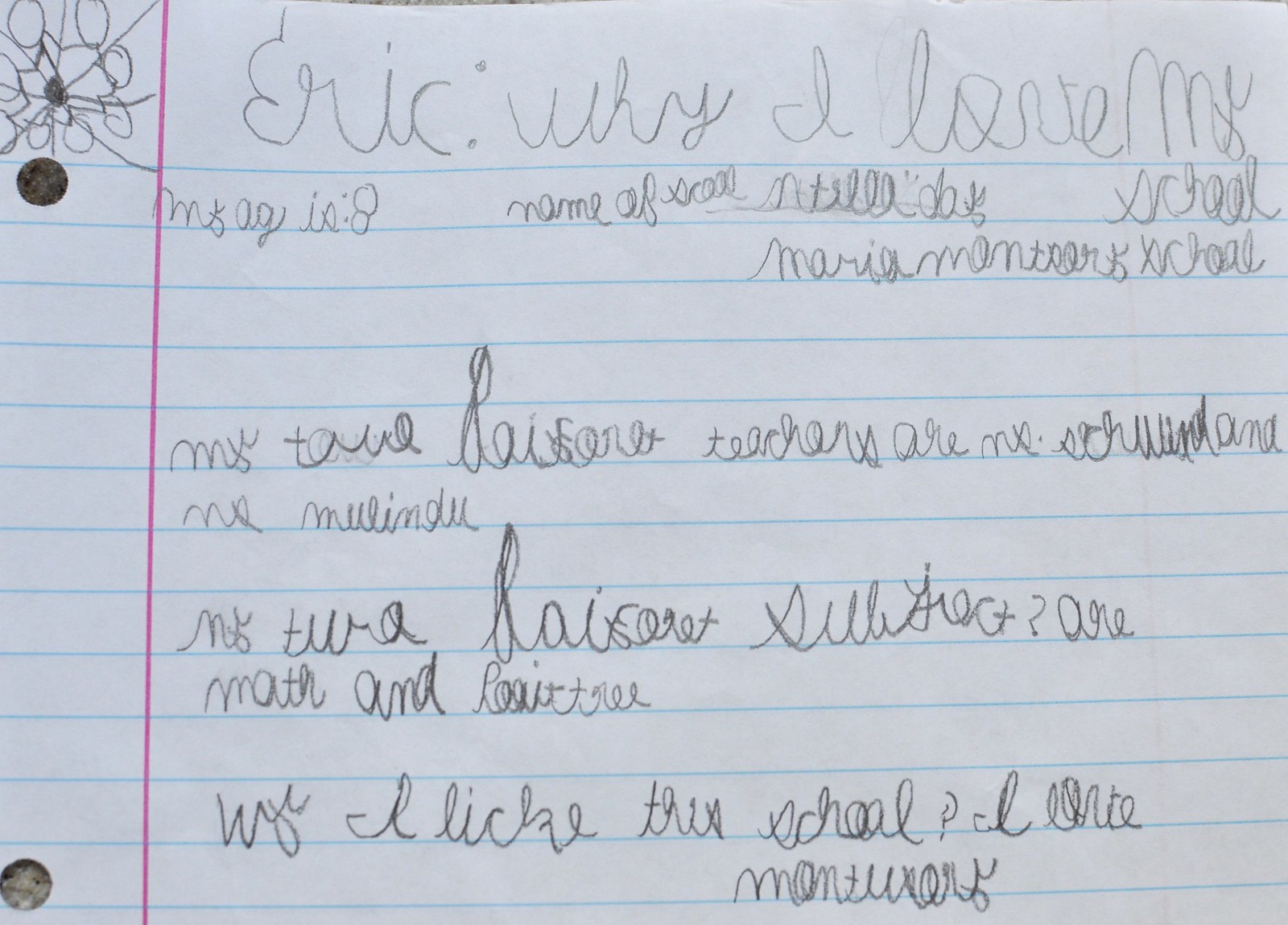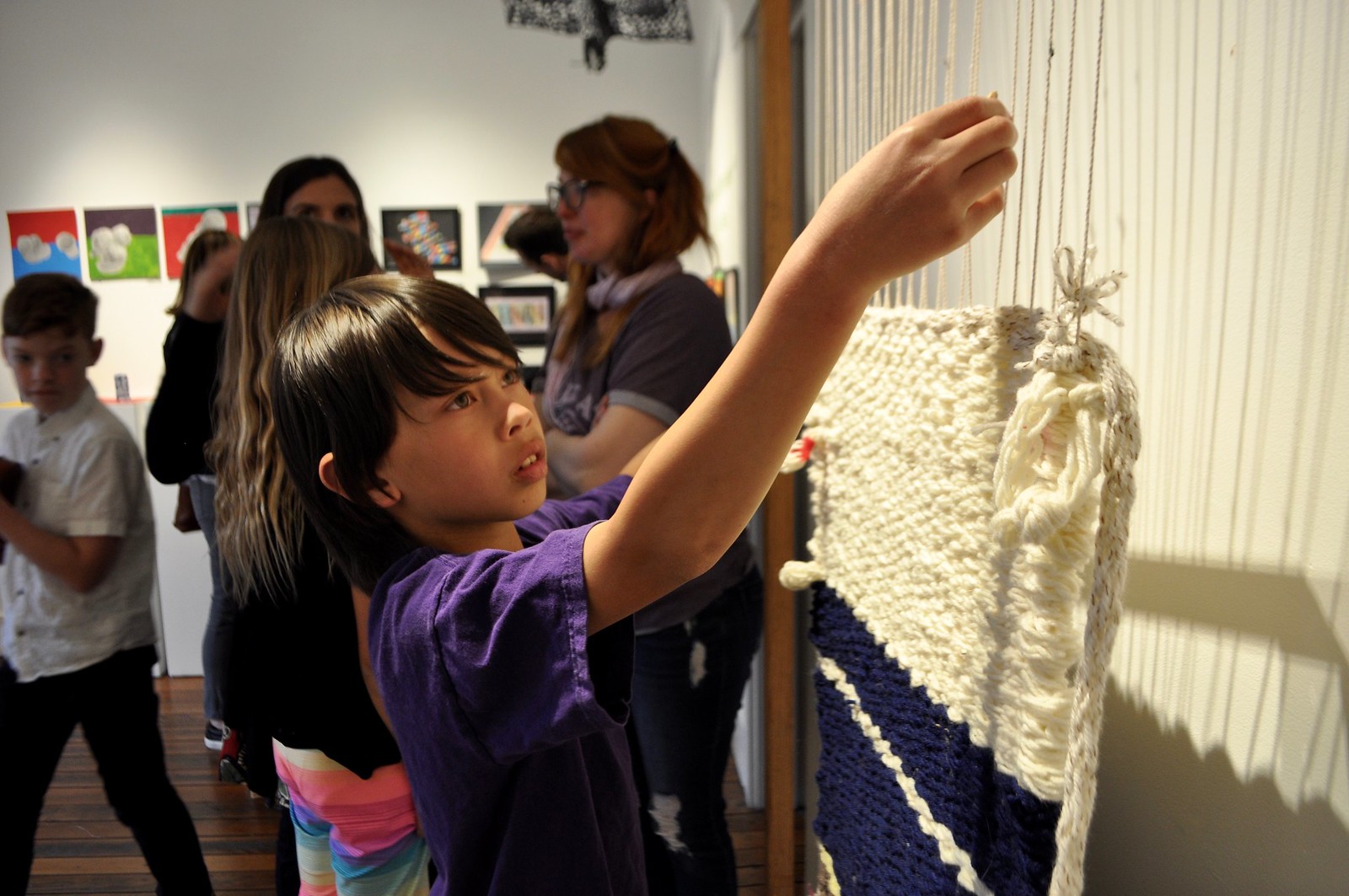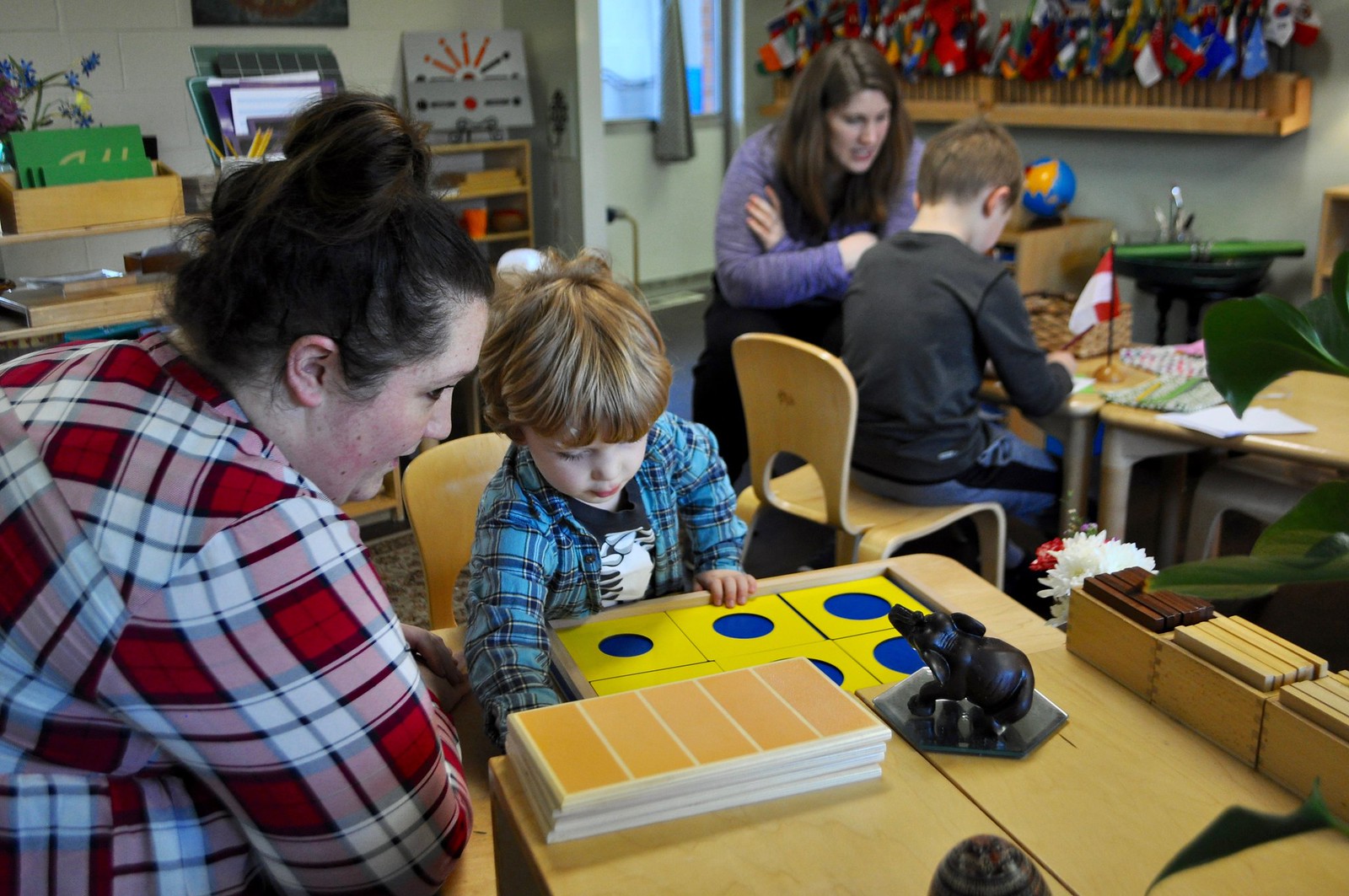 The weekly conference is an immensely important part of the Montessori Elementary experience. As there are typically no tests or homework in Montessori, the weekly conference serves an important role: to provide a child with valuable feedback and engage a child in self-assessment practices.
The weekly conference is an immensely important part of the Montessori Elementary experience. As there are typically no tests or homework in Montessori, the weekly conference serves an important role: to provide a child with valuable feedback and engage a child in self-assessment practices.  An interesting piece of the weekly conference is its variability between Guides and classrooms. Guides agree that the importance of the weekly conference is stressed as very important during their intensive training; however, it is up to each Guide to decide the particulars about how the weekly conference will be conducted.
An interesting piece of the weekly conference is its variability between Guides and classrooms. Guides agree that the importance of the weekly conference is stressed as very important during their intensive training; however, it is up to each Guide to decide the particulars about how the weekly conference will be conducted.
 Megan Eilers, Lower Elementary Guide of the Checkerboard classroom, prefers to hand-write her notes from conferences, then add them to a large class binder for the children to access throughout the week. Children who feel they need a little more direction during the week can access the notes and review what they had discussed with Megan, as well as suggestions (often their own suggestions) for upcoming work.
Megan Eilers, Lower Elementary Guide of the Checkerboard classroom, prefers to hand-write her notes from conferences, then add them to a large class binder for the children to access throughout the week. Children who feel they need a little more direction during the week can access the notes and review what they had discussed with Megan, as well as suggestions (often their own suggestions) for upcoming work.
 Observing conferences between the Guide and the pairs of children was much like sitting in on a meeting with one's boss (a very nice, warm, and friendly boss, be assured!). There is an indisputable feeling of respect between all parties involved: a definite sense of seriousness. The Guides set the tone, and here, they have set one of professionalism. Doing so is a way to show that they take the children's work seriously, and so should the children.
Observing conferences between the Guide and the pairs of children was much like sitting in on a meeting with one's boss (a very nice, warm, and friendly boss, be assured!). There is an indisputable feeling of respect between all parties involved: a definite sense of seriousness. The Guides set the tone, and here, they have set one of professionalism. Doing so is a way to show that they take the children's work seriously, and so should the children. Anna Schwind, Lower Elementary Guide of the Racks and Tubes classroom, shares that also she prefers to conduct her weekly conferences in a highly structured manner. Keeping conferences more rigid allows the children to know what is expected of them and how to prepare for them. This is also more effective from a timing standpoint; with nearly 35 students and one Guide, conferences could take up quite a lot of time if they were less structured.In the Lower Elementary classrooms, children attend conferences in pairs. A younger child is often paired with an older child in order to provide modeling for the younger child (the older child usually goes first during the conference). However, if the younger child comes to the conference more organized/prepared, she may go first!
Anna Schwind, Lower Elementary Guide of the Racks and Tubes classroom, shares that also she prefers to conduct her weekly conferences in a highly structured manner. Keeping conferences more rigid allows the children to know what is expected of them and how to prepare for them. This is also more effective from a timing standpoint; with nearly 35 students and one Guide, conferences could take up quite a lot of time if they were less structured.In the Lower Elementary classrooms, children attend conferences in pairs. A younger child is often paired with an older child in order to provide modeling for the younger child (the older child usually goes first during the conference). However, if the younger child comes to the conference more organized/prepared, she may go first! If the Guide senses (or is told) that a child needs to speak about something in private, the Guide sets up a time to meet privately with the child. However, there are many times when a child is happy to speak up about an issue in front of the child with whom he is paired. Most of the time, the concern is of a social nature, which is typical of this plane of development.
If the Guide senses (or is told) that a child needs to speak about something in private, the Guide sets up a time to meet privately with the child. However, there are many times when a child is happy to speak up about an issue in front of the child with whom he is paired. Most of the time, the concern is of a social nature, which is typical of this plane of development. Children are expected to bring their work, finished and unfinished, to each conference. Anna starts by reading from her computer last week's list of things each child previously committed to working on. They may discuss what goals they have accomplished, or what other works they may have been inspired by instead. At times, a child will not have been able to follow through on the work he had flagged the week before, but this may have more to do with other work coming up rather than a lack of follow-through. For instance, if a child is cooking one week, this work takes up much time (the researching and planning the menu, the list-making, the budgeting, the shopping, the prep-work, the cooking...).
Children are expected to bring their work, finished and unfinished, to each conference. Anna starts by reading from her computer last week's list of things each child previously committed to working on. They may discuss what goals they have accomplished, or what other works they may have been inspired by instead. At times, a child will not have been able to follow through on the work he had flagged the week before, but this may have more to do with other work coming up rather than a lack of follow-through. For instance, if a child is cooking one week, this work takes up much time (the researching and planning the menu, the list-making, the budgeting, the shopping, the prep-work, the cooking...).
Anna shares, "I read
their journal aloud to them, so we both know all the things they did (that they recorded) last week. If we need to address anything about the journal (not being complete in their records, or neatness, or meeting a standard) we might touch on that. If something fantastic is in their journal, we might touch on that too."
"Then, with the list of lessons they had and work they've done fresh in their mind I ask them what they plan to do next week. I write everything they tell me on the computer. I sometimes suggest things (and note that this was my suggestion when I write it) they ought to be working on. Their partners often suggest things as well. This is usually a time when the partner might suggest doing a work together that they both plan on doing next week. It's fun."
A child brings Guide Anna Schwind a cup of tea during her mid-morning conference with two children
"Then I return to the first child and ask them to show me their work. I look over it and we talk about what needs finishing, what should go home and whether something will be completed or just taken home unfinished. Sometimes things are added to the work list at this point. 'Oh, I see this map is unfinished, but you didn't say you would work on it next week. Do you plan to work on it?' Sometimes I ask them if they want to put a given thing in their binder or on the wall for display."
A child signs up for specials for the following week
The weekly conference is also a time for children to plan ahead for the next week, not only with what works they would like to do, but what specials they plan to sign up for (for example, yoga or French).
Within the Upper Elementary, conferences are conducted a bit differently, both for logistical reasons, and for social reasons. Because of the large number of students and the desire to conduct conferences individually, Upper Elementary Guide Rebecca Callander staggers her conferences from one week to the next. On in-between weeks, students help each other through peer conferences.
The beloved timer, which the children discovered is precisely 4 minutes, 54 seconds rather than 5 minutes!
Rebecca shares that in general, she has fewer conversations about social issues, and more conversations surrounding the quality of work; "From conferences, I glean need for writing lessons, organizational support, time management, follow-through. I can also see if there are any areas of insecurity revealing themselves. I typically plan for the next week, asking children if they are ready for a new lesson or if they need a review of a given subject."
Rebecca shares that one interesting and fun thing that happens during Upper Elementary conferences is that she often finds herself surprised! Because of the number of students in the Upper Elementary classroom, and the high level of independence among the children, they often present work that Rebecca did not know they had been working on. How delightful to come across a diagram of a human heart, for example!
And there you have it! The weekly conference: a wonderful tool for self-assessment and critical feedback. Thank you to all the Guides and children for allowing us this glimpse into this critical part of classroom life.

 Our perspective shifts every time our vantage point changes. Standing knee deep in water or sitting astride a horse offers the opportunity to see our world anew. The camping trip affords the children a multitude of experiences to expand their world. The shifts in perspective assist the children in placing themselves in the cosmos.
Our perspective shifts every time our vantage point changes. Standing knee deep in water or sitting astride a horse offers the opportunity to see our world anew. The camping trip affords the children a multitude of experiences to expand their world. The shifts in perspective assist the children in placing themselves in the cosmos.





 If you haven’t already come up with your favorite way to answer those questions about what Montessori is and what makes Montessori unique, here’s a great way to answer: observation.
If you haven’t already come up with your favorite way to answer those questions about what Montessori is and what makes Montessori unique, here’s a great way to answer: observation. Dr. Montessori did not impose a method which happened to work. Rather, her pedagogy arose from her continued observation of children. She noticed which materials the children were drawn to and what type of work they wanted to do. The brilliance she gifted us with is a result of her skilled observation.
Dr. Montessori did not impose a method which happened to work. Rather, her pedagogy arose from her continued observation of children. She noticed which materials the children were drawn to and what type of work they wanted to do. The brilliance she gifted us with is a result of her skilled observation.
 Observation remains the foundational piece of implementing Montessori in the classroom. Through observation the guide gets to know the child and determines how best to link them with the environment. Through purposeful and conscientious noticing, the guide is able to offer the right lesson at just the right time. This in turn leads to repetition,
Observation remains the foundational piece of implementing Montessori in the classroom. Through observation the guide gets to know the child and determines how best to link them with the environment. Through purposeful and conscientious noticing, the guide is able to offer the right lesson at just the right time. This in turn leads to repetition,  As the school year progresses and the children are settling into their environments, parents are invited to get in on the magic by observing in the classroom. This opportunity is an essential part of parent education and a great avenue toward understanding your child’s classroom experience. Observing is also the best way to prepare yourself for parent-teacher conferences!
As the school year progresses and the children are settling into their environments, parents are invited to get in on the magic by observing in the classroom. This opportunity is an essential part of parent education and a great avenue toward understanding your child’s classroom experience. Observing is also the best way to prepare yourself for parent-teacher conferences! Here are some things to look for and/or keep in mind when you observe:
Here are some things to look for and/or keep in mind when you observe:
 Observation is what allows Montessori to come alive. Please come and join us in the classroom!(Isn't Melinda Smith just amazing with her camera? Thank you Melinda!)
Observation is what allows Montessori to come alive. Please come and join us in the classroom!(Isn't Melinda Smith just amazing with her camera? Thank you Melinda!)
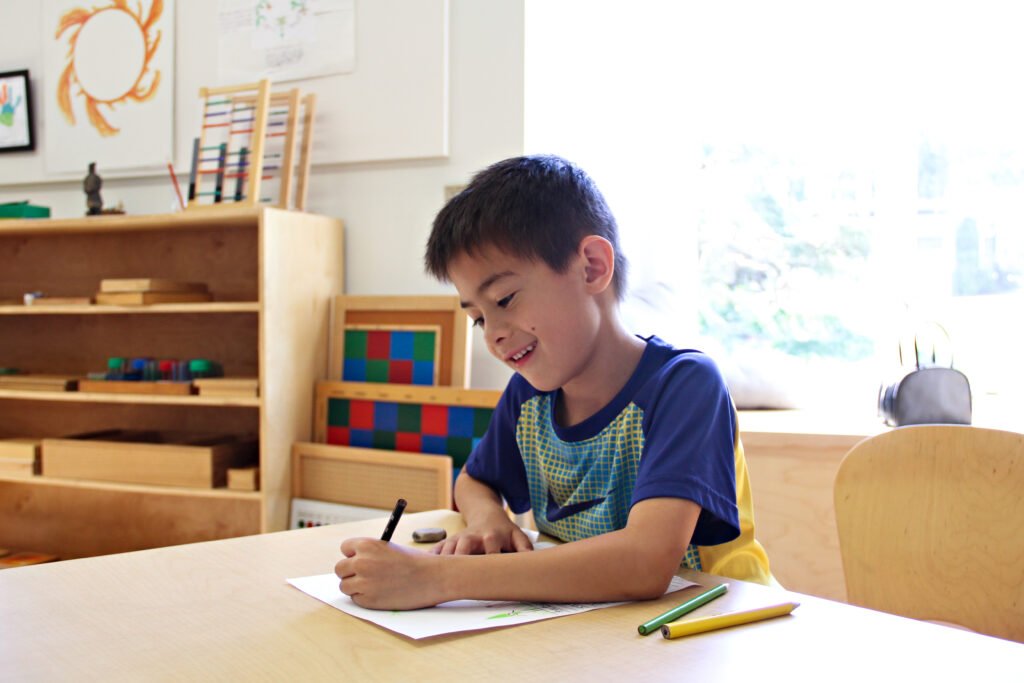 “The first essential for the child's development is concentration. The child who concentrates is immensely happy.”
“The first essential for the child's development is concentration. The child who concentrates is immensely happy.” Montessori environments inherently bolster the development of concentration. The three-hour work period affords extended time without interruption which is vital for concentration to thrive. Further, the materials themselves are attractive to the children, inviting repetition which in turn leads to concentration.
Montessori environments inherently bolster the development of concentration. The three-hour work period affords extended time without interruption which is vital for concentration to thrive. Further, the materials themselves are attractive to the children, inviting repetition which in turn leads to concentration.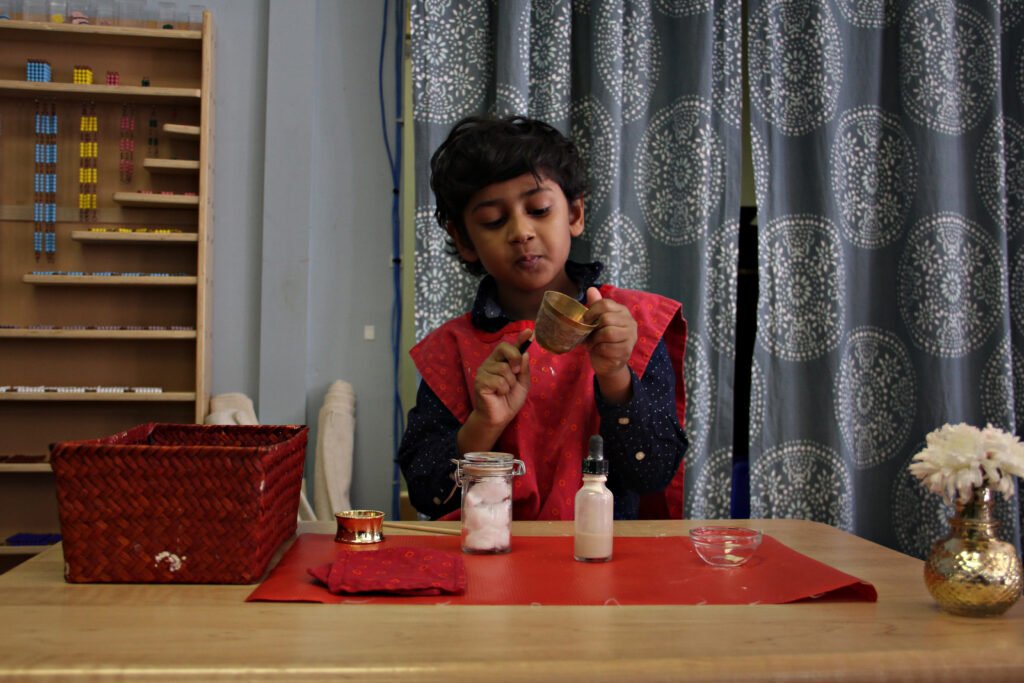
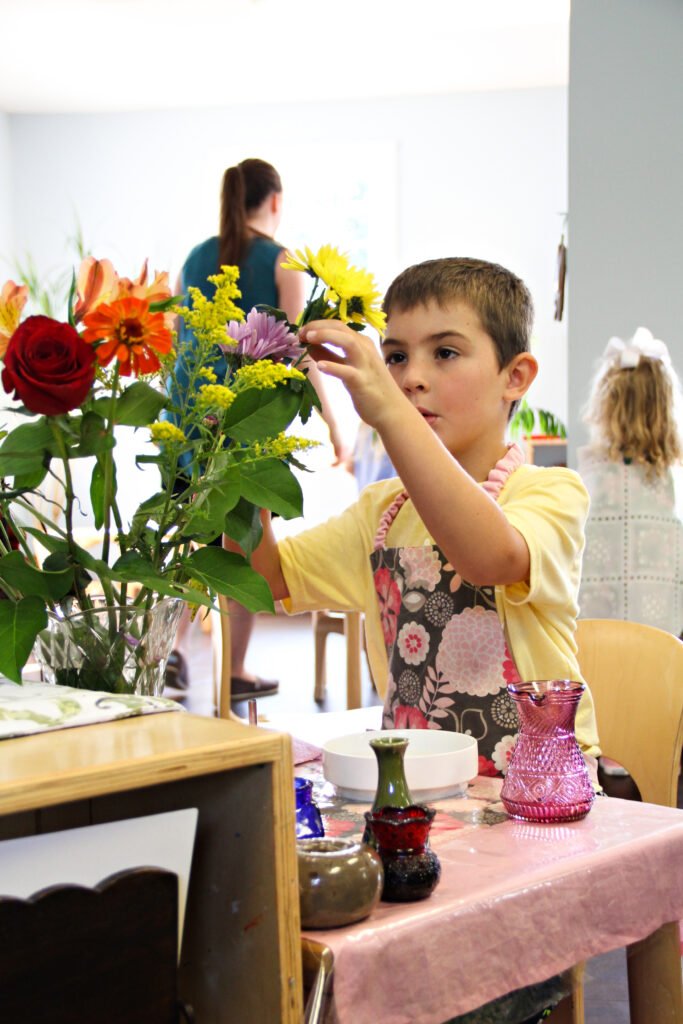 As is true at school, when your child is concentrating on meaningful work at home, please do not interrupt them unless absolutely necessary. Their work may not seem meaningful to adult eyes, but balancing playing cards, tying and untying bows, lining up all the shoes in the house... This is all meaningful work.
As is true at school, when your child is concentrating on meaningful work at home, please do not interrupt them unless absolutely necessary. Their work may not seem meaningful to adult eyes, but balancing playing cards, tying and untying bows, lining up all the shoes in the house... This is all meaningful work.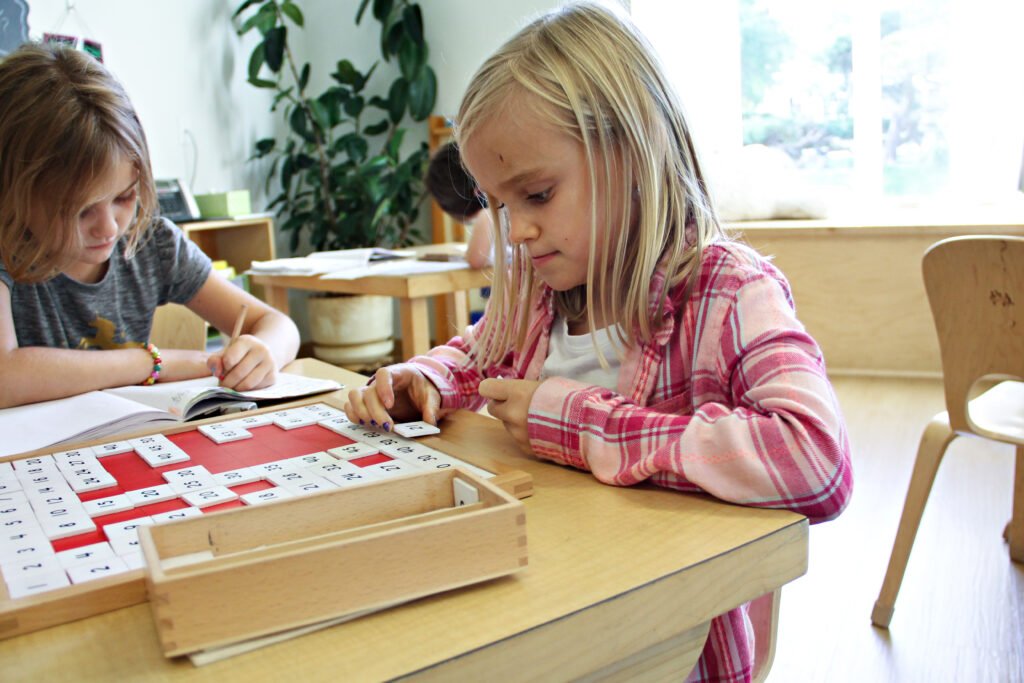 The sight of a child concentrating can transport us. We sense the feeling of deep calm and focus we too experience when we are allowed to fully lose ourselves to a productive task. Concentration is a beautiful thing to witness. Here we are witnesses to the moment of learning, the acquisition of knowledge.
The sight of a child concentrating can transport us. We sense the feeling of deep calm and focus we too experience when we are allowed to fully lose ourselves to a productive task. Concentration is a beautiful thing to witness. Here we are witnesses to the moment of learning, the acquisition of knowledge.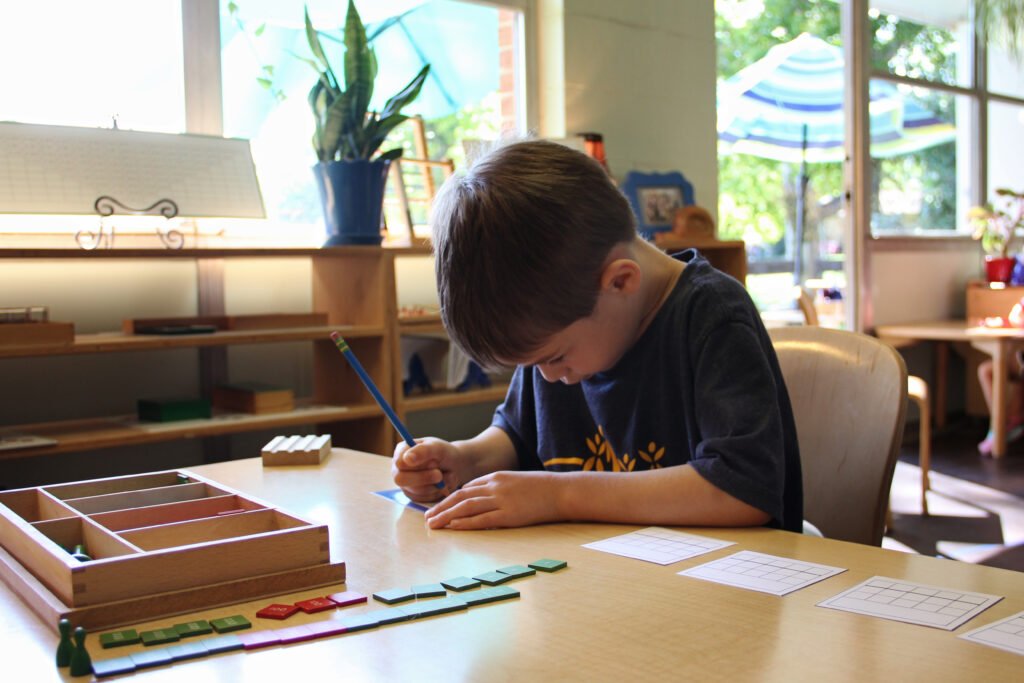 Many thanks to Melinda Smith for sharing her splendid photography.
Many thanks to Melinda Smith for sharing her splendid photography.

 There can be as many ways to do this as there are classrooms of elementary children, but a few helpful principles that guides may often use are:
There can be as many ways to do this as there are classrooms of elementary children, but a few helpful principles that guides may often use are:
 The process will be both similar and different each year. This year, when I asked the children why we might want to phrase things positively instead of negatively, one mischievous-eyed child shared, “Because when someone tells you you can’t do something, it just makes you want to do it more.” Early wisdom, from a child who has - perhaps - had many experiences already being told what they couldn’t do, and far fewer being encouraged in what they can do. Imagine how helpful it might be to give this child options instead of restrictions! The rules (or guidelines, or contract, it can be called whatever the children are comfortable with) can present a roadmap to help the children be their best selves instead of a series of roadblocks preventing them from progress.
The process will be both similar and different each year. This year, when I asked the children why we might want to phrase things positively instead of negatively, one mischievous-eyed child shared, “Because when someone tells you you can’t do something, it just makes you want to do it more.” Early wisdom, from a child who has - perhaps - had many experiences already being told what they couldn’t do, and far fewer being encouraged in what they can do. Imagine how helpful it might be to give this child options instead of restrictions! The rules (or guidelines, or contract, it can be called whatever the children are comfortable with) can present a roadmap to help the children be their best selves instead of a series of roadblocks preventing them from progress.
 In an upcoming post we will cover class meetings, one of the tools for amending, expanding and revisiting the social contract made together at the start. In part three, we will talk about how you can include and empower your child in your family life at home (spoiler: it’s the weekly family meeting).Many thanks to Melinda Smith and Jade Venditte for the photographs.
In an upcoming post we will cover class meetings, one of the tools for amending, expanding and revisiting the social contract made together at the start. In part three, we will talk about how you can include and empower your child in your family life at home (spoiler: it’s the weekly family meeting).Many thanks to Melinda Smith and Jade Venditte for the photographs.
 Like most things in the Montessori classroom, lunch is a multi-faceted opportunity for growth. It provides occasions for choice making, self-sufficiency and increasing hand strength and dexterity. It’s a time to practice social graces, build community and learn table manners. Our work at home regarding lunch preparation can feed this work in the classroom, allowing the children to get the most out of mealtime at school.
Like most things in the Montessori classroom, lunch is a multi-faceted opportunity for growth. It provides occasions for choice making, self-sufficiency and increasing hand strength and dexterity. It’s a time to practice social graces, build community and learn table manners. Our work at home regarding lunch preparation can feed this work in the classroom, allowing the children to get the most out of mealtime at school.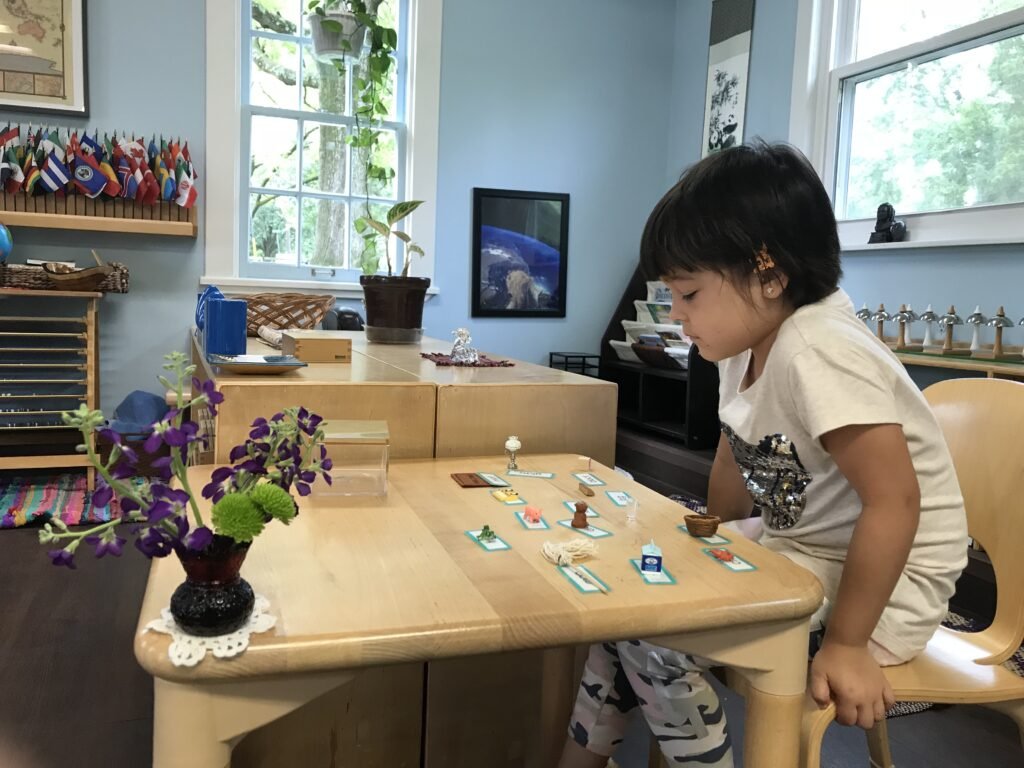 When thinking about lunches, we must keep in mind how much our children work while they are at school. The youngest are building their personalities, refining their movement, expanding their language and working with numbers. Elementary children are figuring out their social selves and actively pursuing new learning.After a three-hour work period, children need to replenish their energy with a healthy lunch. Extended day and elementary children need their lunch to provide the nourishment for their afternoon work.While we've all had the occasional day where we pretend that the cheese flavoring in the bag of Doritos counts as protein and fruit snacks are actually fruit, we also know this has to be the exception rather than the rule in order for our children to have what they need at to thrive at school.In the Children’s House a protein, fruit and vegetable will suffice for most children. Elementary children will likely need larger portions; figuring out how much they need is a conversation you can have with your child at the end of the day. (Strategies and tips about the actual packing of lunches coming soon!)While adjusting the choices available for lunch, school can be an excuse to deflect pushback. “This is what <insert name of teacher> said…” goes a long way. Use it sparingly and use it wisely, but if you need extra support packing a lunch full of healthy options, this might be one of those moments.
When thinking about lunches, we must keep in mind how much our children work while they are at school. The youngest are building their personalities, refining their movement, expanding their language and working with numbers. Elementary children are figuring out their social selves and actively pursuing new learning.After a three-hour work period, children need to replenish their energy with a healthy lunch. Extended day and elementary children need their lunch to provide the nourishment for their afternoon work.While we've all had the occasional day where we pretend that the cheese flavoring in the bag of Doritos counts as protein and fruit snacks are actually fruit, we also know this has to be the exception rather than the rule in order for our children to have what they need at to thrive at school.In the Children’s House a protein, fruit and vegetable will suffice for most children. Elementary children will likely need larger portions; figuring out how much they need is a conversation you can have with your child at the end of the day. (Strategies and tips about the actual packing of lunches coming soon!)While adjusting the choices available for lunch, school can be an excuse to deflect pushback. “This is what <insert name of teacher> said…” goes a long way. Use it sparingly and use it wisely, but if you need extra support packing a lunch full of healthy options, this might be one of those moments.
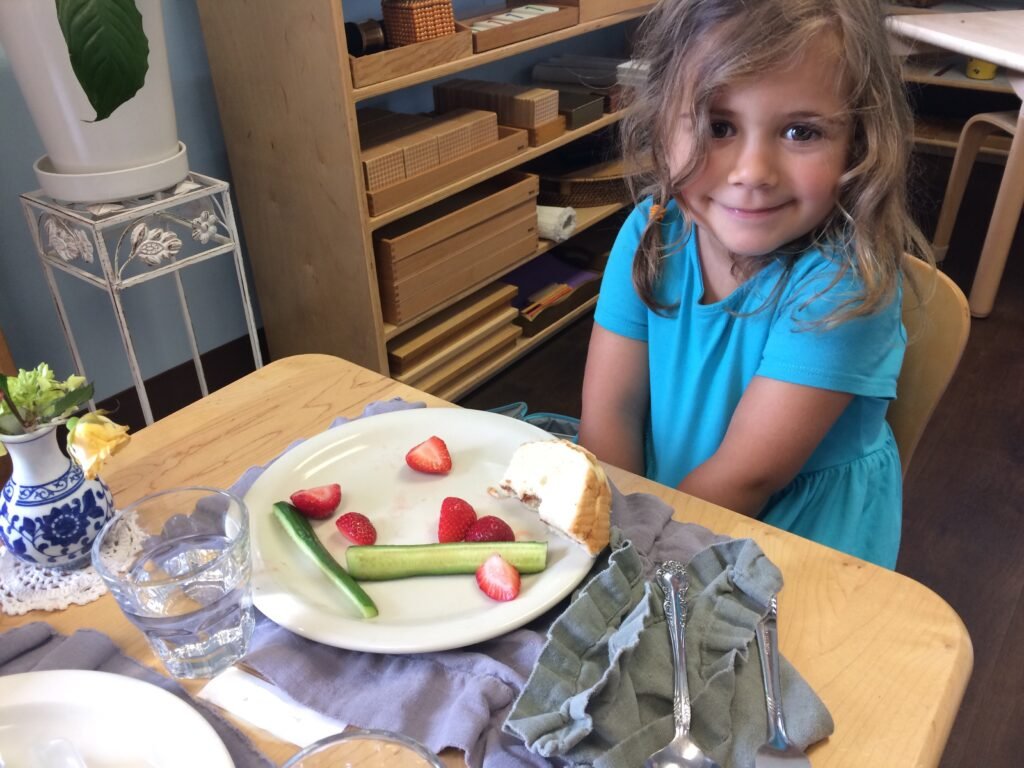 Photo credit: Jessie Braud
Photo credit: Jessie Braud

 We are so excited that 2018-2019 is officially underway!
We are so excited that 2018-2019 is officially underway! Five minutes into the school year and the outdoor environment was in full swing! What better place to do watercolor painting than out in the sunshine.
Five minutes into the school year and the outdoor environment was in full swing! What better place to do watercolor painting than out in the sunshine. The children wasted no time connecting with nature and caring for their environment.
The children wasted no time connecting with nature and caring for their environment. Welcome back fort builders!
Welcome back fort builders! From the very beginning, we end our day with jobs. Taking out the trash and recycling gives the children the opportunity to contribute to the whole community.Here's to a fabulous year!
From the very beginning, we end our day with jobs. Taking out the trash and recycling gives the children the opportunity to contribute to the whole community.Here's to a fabulous year!
 The prepared environment is central to Montessori theory and crucial to its practice. Each environment is specially designed to meet the needs of the children who occupy it. Our guides, assistants and staff have been working tirelessly to prepare each of our environments for the children. And we cannot wait for them to come!
The prepared environment is central to Montessori theory and crucial to its practice. Each environment is specially designed to meet the needs of the children who occupy it. Our guides, assistants and staff have been working tirelessly to prepare each of our environments for the children. And we cannot wait for them to come! In preparing the environments, guides have taken into consideration everything from the sequence of the materials to the natural light in the room. They have contemplated daily routines, how the children will move through the room, and placement of artwork. Each decision was made while holding central the needs of the children.
In preparing the environments, guides have taken into consideration everything from the sequence of the materials to the natural light in the room. They have contemplated daily routines, how the children will move through the room, and placement of artwork. Each decision was made while holding central the needs of the children. It is not just the physical space which has been prepared. The guides, assistants and staff have also been preparing themselves through the summer and over the past few weeks in particular.
It is not just the physical space which has been prepared. The guides, assistants and staff have also been preparing themselves through the summer and over the past few weeks in particular. Preparation of the adult is an ongoing process. It requires self-reflection and conscious work so that we offer the best of ourselves to the children. Self-preparation takes many different routes. Some read books, some catch up on much needed self-care, some attend lectures or workshops. As a whole, the staff has engaged in anti-bias, anti-racist training. All of this work is to bring our best selves to your children.
Preparation of the adult is an ongoing process. It requires self-reflection and conscious work so that we offer the best of ourselves to the children. Self-preparation takes many different routes. Some read books, some catch up on much needed self-care, some attend lectures or workshops. As a whole, the staff has engaged in anti-bias, anti-racist training. All of this work is to bring our best selves to your children. Our guides do not model perfection but rather curiosity, kindness, and a friendliness toward error which results in true learning and resiliency. Guides model human beings who choose to walk on the path toward reaching their potential. This is the very path on which we invite the children to join us. It’s the path we lay for them by preparing the environment.
Our guides do not model perfection but rather curiosity, kindness, and a friendliness toward error which results in true learning and resiliency. Guides model human beings who choose to walk on the path toward reaching their potential. This is the very path on which we invite the children to join us. It’s the path we lay for them by preparing the environment. Welcome and welcome back!All photography is thanks to Melinda Smith.
Welcome and welcome back!All photography is thanks to Melinda Smith.













